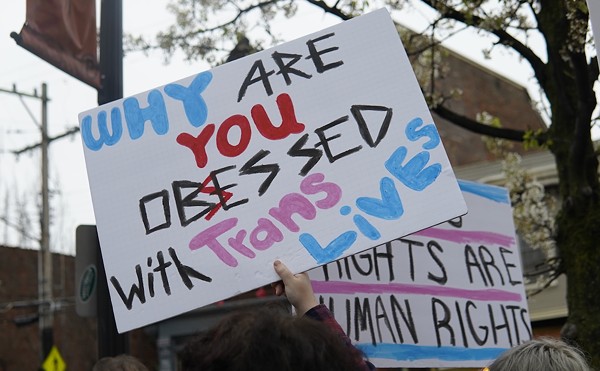City Manager Milton Dohoney Jr. released his operating budget plan for fiscal years 2014 and 2015 today. The plan makes lower-than-expected cuts to police, fire and other city departments to help balance the $35 million deficit in the operating budget for fiscal year 2014, but it would also effectively raise property taxes.
The City Charter allows the city to leverage 6.1 mills in property taxes, but City Council only approved the use of 5.7 mills for the operating budget in 2014, up from 4.6 mills in 2013. The budget plan would leverage the full 6.1 mills in 2015, effectively raising annual property taxes between 2014 and 2015 by $34 for every $100,000 in property value.
Water Works rates would also be reworked with a new pricing structure, which would add $3.11 to a Water Works customer’s bill each quarter.
The budget plan recommends laying off 66 employees in the Police Department, down from a previous estimate of 149. Fire personnel layoffs were also reduced to 71, down from 118. In other departments, 64 would be laid off.
The budget release estimates the fire layoffs would lead to an estimated 10 brownouts a day in which one truck in a firehouse would not run.
About $20.4 million of the fiscal year 2014 budget gap would be closed by cutting expenditures, while the rest would be closed with changes in revenue.
The budget release says the cuts are a result of the city’s parking plan falling through in light of a referendum effort and legal challenges: “While the Manager’s budget, with support from policy makers, has typically centered on strategies for growth to expand the local economy, this budget is constructed in light of the lack of revenue from the Parking Modernization and Lease, approved by the majority of City Council but held up in litigation.”
With the reduced layoffs, the city will save money by paying less in accrued leave and unemployment insurance. Previously, city officials estimated it would cost about $10 million to lay people off, but that number was reduced to $3.5 million in the revised budget plan.
The budget plan would also eliminate 17 vacant full-time positions in various departments and delay filling other vacant positions, which the budget release says would cause some strain: “These vacant position eliminations and prolonged position vacancies would further challenge departments that have already experienced significant funding and position reductions in prior budget years.”
The plan would also increase employees’ cost share for health care from 5 percent to 10 percent, reduce cost of living adjustments and force furloughs, which would span to executive and senior level management positions, including the city manager. The changes effectively add up to a 1.9 percent salary reduction, according to the budget release.
Other cuts in the budget were selected through the Priority-Driven Budgeting Process, which used surveys and public meetings to gauge what city programs are most important to local citizens. About $1.7 million would come from personnel and service reductions in the Health Department’s Community Health Environmental Inspections programs, the Law Department and the Department of Recreation. Another $1.5 million would be cut from funding to outside entities, including human services agencies, the Neighborhood Support Program, the Greater Cincinnati Chamber of Commerce and the African American Chamber of Commerce.
Furthermore, subsidies for “Heritage Events,” such as the Findlay Market Opening Day Parade and St. Patrick’s Day Parade, would be eliminated, along with all arts funding.
The budget plan would also eliminate various other services, including the Bush Recreation Center in Walnut Hills, the Office of Environmental Quality’s Energy Management program and the Cincinnati Police Department’s mounted patrol unit.
The budget plan includes a slew of new fees: a $75 fee for accepted Community Reinvestment Area residential tax abatement applications, a $25 late fee for late income tax filers, a $100 fee for fire plan reviews, an unspecified hazardous material cleanup fee, a 50-cent hike for admission into the Krohn Conservatory and an unspecified special events fee for city resources used for special events.
The budget plan would also use casino revenue: $9.1 million in 2013 and 2014 and $7.5 million in 2015.
The city was originally planning to lease its parking assets to the Greater Cincinnati Port Authority to help balance the operating budget and fund economic development projects (
“Parking Stimulus,”
issue of Feb. 27), but the plan will be on the November ballot this year ifcourt challenges
are successful.
But if the city is successful in court, the budget release claims many of the cuts could be undone by using revenue from the parking plan.
The city manager’s office says the budget must be approved by City Council and the mayor by June 1 to provide 30 days for the budget’s implementation in time for fiscal year 2014, which begins July 1.
Previously, the city could have used an emergency clause to eliminate a 30-day waiting period for implementing laws, but City Solicitor John Curp says the court challenges have effectively eliminated the power behind emergency clauses by making all laws, even laws passed with an emergency clause, susceptible to referendum within 30 days.
The operating budget is separate from the streetcar budget, which is also facing a
$17.4 million budget shortfall
. The streetcar is funded through the capital budget, which can’t be used to balance the operating budget because of budgeting limits established in state law.




